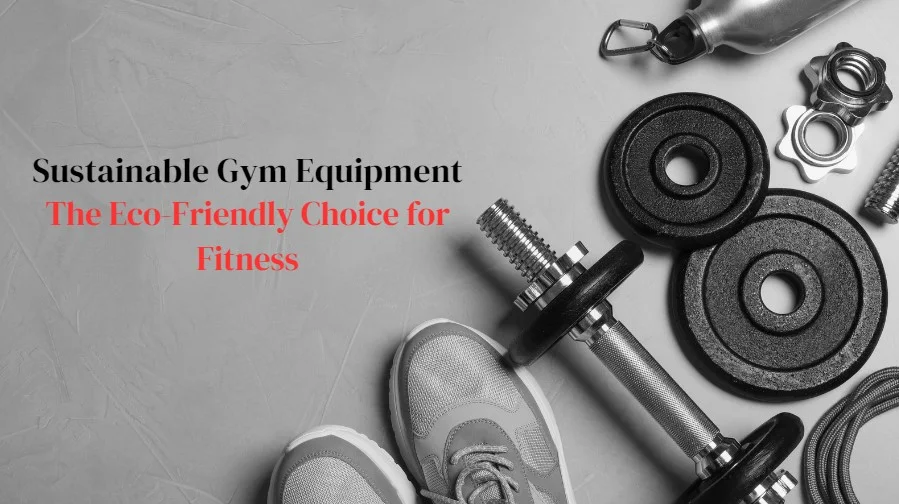Table of Contents
In a world increasingly conscious of its environmental impact, many industries are transitioning towards sustainability—and the fitness realm is no exception. The rise of sustainable gym equipment signifies a shift in how we approach fitness, both in terms of personal health and the health of our planet.
Why Sustainable Gym Equipment?
Our planet is undergoing significant environmental challenges. From deforestation to pollution, our daily choices impact the world around us. Fitness, for many, is a daily activity, and the equipment we use plays a part in this environmental narrative.
Traditional gym equipment, often made from non-renewable resources, can have a significant carbon footprint—from manufacturing to shipping. Sustainable gym equipment, on the other hand, reduces this impact. Made from eco-friendly materials and often designed for longevity, they offer a green alternative without compromising on quality or performance.
Materials Make the Difference Sustainable gym equipment
Hallmark of Sustainability: When evaluating the green credentials of gym equipment, the choice of materials is pivotal. Traditional manufacturing processes often rely on non-renewable resources, while sustainable production emphasizes materials that either come from renewable sources or have minimal environmental footprints.
Eco-friendly Yoga Mats as a Case Study: Yoga mats provide an illustrative example of this shift. In the past, most mats were produced using PVC, a material notorious for its environmental harm. Today, many manufacturers have pivoted towards natural, eco-friendly alternatives. Mats made from materials like natural rubber or sustainably-sourced cork not only have reduced environmental impact but often outperform their conventional counterparts in terms of grip, comfort, and durability.
Benefits for Gym Owners and Enthusiasts
Projecting an Eco-conscious Brand Image: The choice to embrace sustainable equipment isn’t just an environmental decision; it’s a business strategy. For gym owners, the move signals a commitment to responsible practices, which can resonate with a growing segment of the population that prioritizes environmental stewardship. In an industry brimming with competition, this eco-friendly edge can be the differentiator that attracts discerning clients.
Durability and Economic Benefits: One of the underlying principles of sustainability is durability. Equipment made with robust, high-quality materials tends to last longer, thereby minimizing the frequency of replacements. While the initial investment might be higher, the long-term savings, both in terms of money and environmental resources, are significant.
Promoting a Healthier Space: Beyond the physical health benefits that gym-goers seek, there’s a broader wellness aspect at play. Using equipment free from harmful chemicals or toxins ensures that members can focus on their workouts without the underlying worry of potential health hazards stemming from the equipment they use.
Making the Switch
The Power of Informed Decisions: Transitioning to sustainable gym equipment isn’t just about buying new items; it’s about making informed choices. Conducting thorough research ensures that gym owners are not swayed by mere greenwashing. Authentic sustainability claims are often backed by recognized certifications, transparent supply chain disclosures, or affiliations with reputed environmental organizations.
Embracing the Upcycle Movement: The sustainable journey doesn’t stop at purchasing eco-friendly equipment. How one deals with old equipment is equally crucial. Upcycling, which entails giving old items a new purpose or functionality, can be a strategic approach. Alternatively, donating or selling used equipment can extend its life, preventing premature entry into landfills.
A Gradual Transition Strategy: Going green doesn’t necessitate an overnight transformation. For many gym owners, budgetary and logistical constraints might make an immediate switch challenging. In such cases, a phased approach works best. By identifying and starting with the most frequently used or worn-out equipment and then systematically upgrading over time, gym owners can ensure a smoother, more manageable transition.
In Conclusion
The shift towards sustainable gym equipment is more than just a trend—it’s a testament to our evolving relationship with the environment. By choosing eco-friendly fitness gear, we’re not just investing in our health but also championing a sustainable future.
Read more: Eco Friendly Gym Flooring: Benefits and Options

